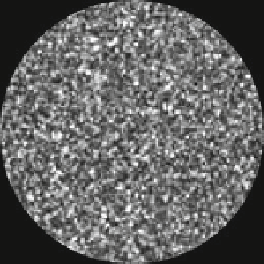Geoscience Reference
In-Depth Information
Fig. 11.8
Model distribution
of contact EMF along the
casing pipe. A
circle
indicates
the boundary of fractured
zone resulted from the
explosion
z
r
h
0
r
h
q
R
The quasi-static electromagnetic perturbations originated from these currents could
be detected just after the casing pipe installation and even before the underground
detonation itself.
Considering the electrochemical processes around the metallic ore body, it is
usually the case that the top of ore body plays a role of a negative electrode
(Semenov
1974
). In this notation, we suppose that the upper part of the casing
pipe operates as a negative electrode while the lower part serves as a positive
electrode. Let h be the length of casing pipe while h
0
be the length of the effective
negative electrode as schematically shown in Fig.
11.8
. The detonation at the depth
h results in the formation of spherical region of the fractured rock with radius R,
whose conductivity,
p
, is different from the conductivity,
g
, of the surrounding
rock. Suppose that the current distribution is stationary and the total current, I,
generated by the electrodes is a given value. The currents per unit length of negative
electrode, I=h
0
, and positive electrode, I=.h
h
0
/, are constant values. Then the
potential, ', of the electric field is determined by Poisson equation which should
be supplemented by the proper boundary conditions; that is, the potential and its
derivative with respect to radius is continuous at the ball surface and the vertical
component of the current density has to be zero at the free surface.
The solution of this problem for the potential ' can be represented in the form
'
D
'
0
C
'
p
, where '
0
denotes the potential generated by the casing pipe in the





















Search WWH ::

Custom Search